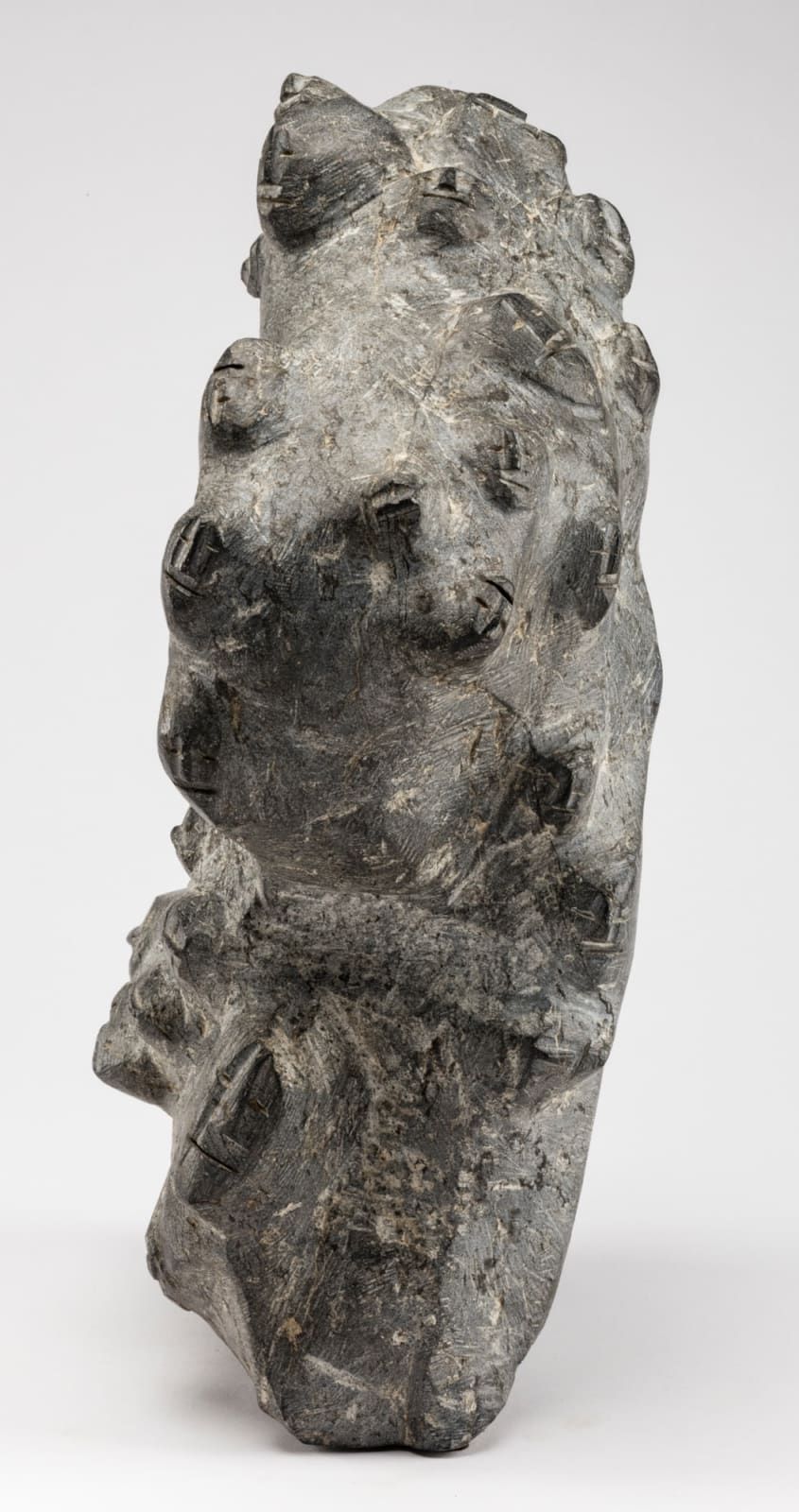-
Artworks
LUCY TASSEOR TUTSWEETOK (1934-2012) ARVIAT (ESKIMO POINT)
Many Faces, late 1970sstone, 15 x 9.25 x 6 in (38.1 x 23.5 x 15.2 cm)
signed, "ᓗᓯ / ᑕᓯᐅ".LOT 75
ESTIMATE: $10,000 — $15,000
PRICE REALIZED: $16,800.00Further images
Lucy Tasseor began carving around 1965 or 1966. Encouraged by the local federal arts and crafts officer Dennis Webster, and not long after by the visiting art scholar George Swinton...Lucy Tasseor began carving around 1965 or 1966. Encouraged by the local federal arts and crafts officer Dennis Webster, and not long after by the visiting art scholar George Swinton (who was no doubt responsible for the inclusion of five of her works in the famous international travelling exhibition Sculpture/Inuit of 1971-73), she often worked alongside her friend John Pangnark. The two artists each developed their own strong personal styles, but they shared an affinity for “abstraction.” Tasseor worked on a small scale for several years; her first important large sculpture, Mother and Children from c. 1970 is in the Winnipeg Art Gallery and has been widely published (see Zepp’s Pure Vision, cat. 35 and Hessel 1998, pl. 81). Even small carvings by Tasseor have a monumental quality, but her large works are true monuments; her three-foot People (Inuit) from 1991 at the National Gallery of Canada in Ottawa is frequently on display in one of the building’s interior courtyards.
Many Faces is a large and highly important work from the late 1970s. Its style falls somewhere between her Faces Emerging from Stone from c. 1975 (Canadian Museum of History Collection) and Face Cluster c. 1980, both illustrated in Pure Vision (cats. 39, 41). Many Faces is remarkable also for the sheer number of faces it depicts (over forty). Interestingly there is no single dominant “mother’s” face among them; rather the relatively small heads and faces seem to swarm all over the stone – except on one edge that seems to bear the marks of quarrying (a lovely touch), and one side, on which is faintly inscribed the left arm of the mother (yes, one of the upper heads must belong to the mother). The heads face every which way, which intensifies the “swarming” effect. The stone matrix is very dense, so Tasseor had to work extremely hard to fashion the heads, which are mostly in quite high relief; the marks of the artist’s simple hand tools are everywhere. Many Faces is one of the most impressive and expressive sculptures by Tasseor that we have ever seen. Magnificent.
References: For related works by Lucy Tasseor see Norman Zepp, Pure Vision: The Keewatin Spirit, (Regina: Norman Mackenzie Art Gallery, 1986), cat. 39, p. 93 and cat. 41, p. 95. See also Norman Zepp, Inspiration: Four Decades of Sculpture by Canadian Inuit, (Vancouver: Marion Scott Gallery, 1995), cat. 35, p. 59. For another large Tasseor sculpture with a similar “swarm” of faces see Waddington’s, 7 Nov. 2005, Lot 331.Provenance
Marion Scott Gallery, Vancouver;
Acquired from the above by the present Private Collection, San Francisco.
Join our mailing list
* denotes required fields
We will process the personal data you have supplied in accordance with our privacy policy (available on request). You can unsubscribe or change your preferences at any time by clicking the link in our emails.










